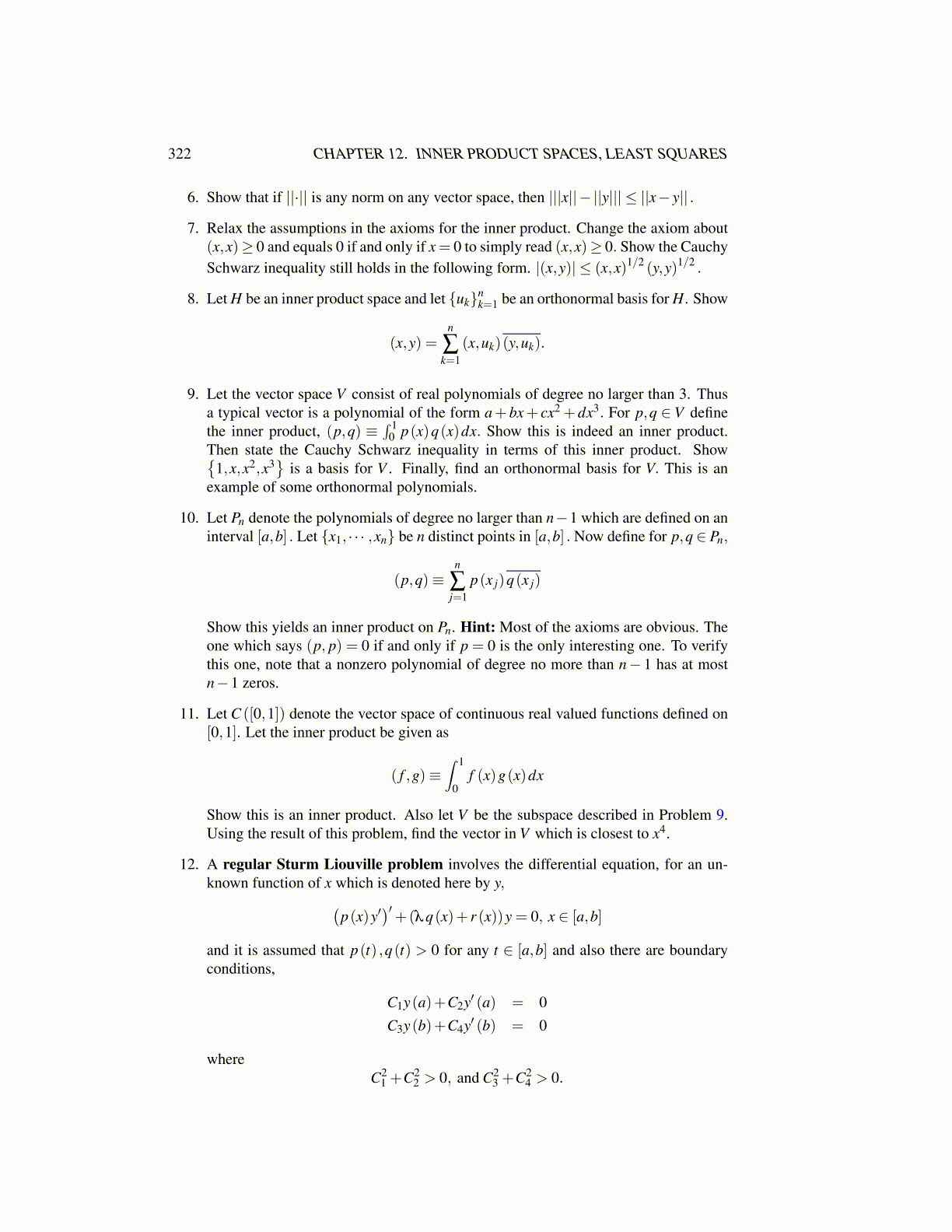
322 CHAPTER 12. INNER PRODUCT SPACES, LEAST SQUARES
6. Show that if ||·|| is any norm on any vector space, then |||x||− ||y||| ≤ ||x− y|| .
7. Relax the assumptions in the axioms for the inner product. Change the axiom about(x,x)≥ 0 and equals 0 if and only if x = 0 to simply read (x,x)≥ 0. Show the CauchySchwarz inequality still holds in the following form. |(x,y)| ≤ (x,x)1/2 (y,y)1/2 .
8. Let H be an inner product space and let {uk}nk=1 be an orthonormal basis for H. Show
(x,y) =n
∑k=1
(x,uk)(y,uk).
9. Let the vector space V consist of real polynomials of degree no larger than 3. Thusa typical vector is a polynomial of the form a+ bx+ cx2 + dx3. For p,q ∈ V definethe inner product, (p,q) ≡
∫ 10 p(x)q(x)dx. Show this is indeed an inner product.
Then state the Cauchy Schwarz inequality in terms of this inner product. Show{1,x,x2,x3
}is a basis for V . Finally, find an orthonormal basis for V. This is an
example of some orthonormal polynomials.
10. Let Pn denote the polynomials of degree no larger than n−1 which are defined on aninterval [a,b] . Let {x1, · · · ,xn} be n distinct points in [a,b] . Now define for p,q ∈ Pn,
(p,q)≡n
∑j=1
p(x j)q(x j)
Show this yields an inner product on Pn. Hint: Most of the axioms are obvious. Theone which says (p, p) = 0 if and only if p = 0 is the only interesting one. To verifythis one, note that a nonzero polynomial of degree no more than n− 1 has at mostn−1 zeros.
11. Let C ([0,1]) denote the vector space of continuous real valued functions defined on[0,1]. Let the inner product be given as
( f ,g)≡∫ 1
0f (x)g(x)dx
Show this is an inner product. Also let V be the subspace described in Problem 9.Using the result of this problem, find the vector in V which is closest to x4.
12. A regular Sturm Liouville problem involves the differential equation, for an un-known function of x which is denoted here by y,(
p(x)y′)′+(λq(x)+ r (x))y = 0, x ∈ [a,b]
and it is assumed that p(t) ,q(t) > 0 for any t ∈ [a,b] and also there are boundaryconditions,
C1y(a)+C2y′ (a) = 0C3y(b)+C4y′ (b) = 0
whereC2
1 +C22 > 0, and C2
3 +C24 > 0.